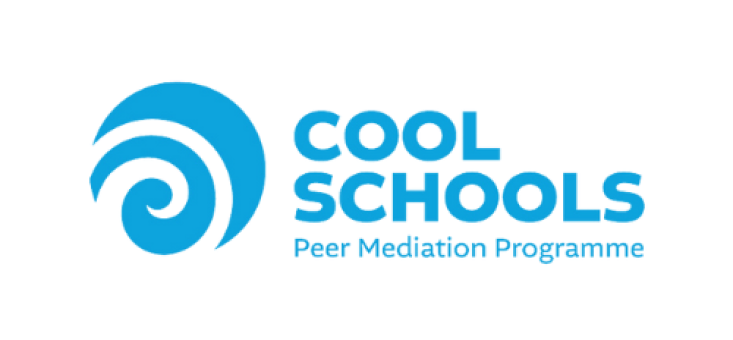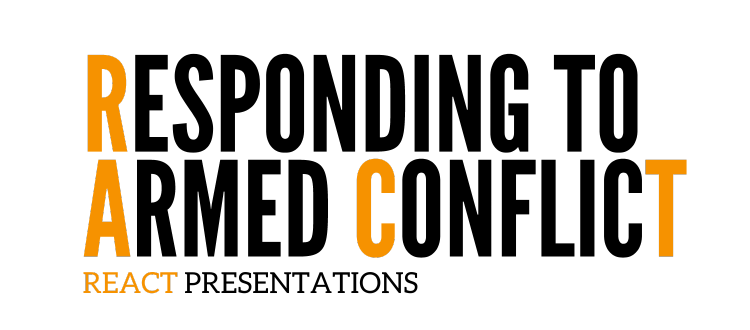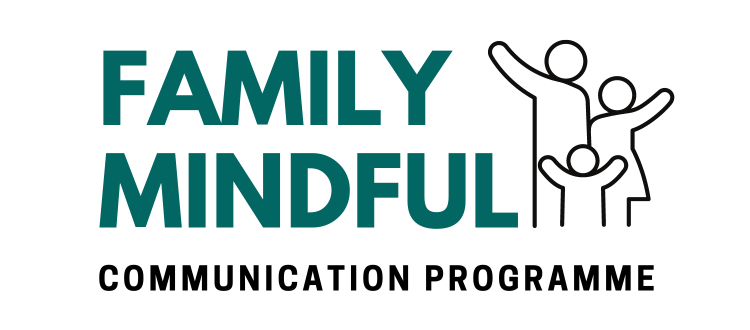About The Peace Foundation
The Foundation for Peace Studies Aotearoa/New Zealand Inc, a registered charitable society with operating name of The Peace Foundation was formed in 1975 with the vision of building peaceful local, national and global communities.
The Peace Foundation is an educational organisation that offers innovative programmes, services and resources that are used in schools, homes and communities throughout New Zealand and overseas. Our programmes help to establish and maintain peaceful relationships by teaching skills that encourage better communication, co-operation, respect and conflict resolution.
Core Programmes

primary schools

secondary schools


MISSION
To build peaceful relationships among people of all ages and cultures – from personal to global – through education, research and action.
VISION
Peaceful local, national and global communities.
VALUES
In pursuing this mission we are committed to honour Te Tiriti O Waitangi, human rights and the peaceful resolution of conflict and to modelling peace-making values within the Foundation and beyond.
Inspire
To inspire people of all ages and cultures to build peaceful relationships on a personal to global scale.
Empower
To empower our communities by offering practical tools for peaceful living.
Support
To support individuals in our communities with programmes that help build positive, safe, respectful relationships, especially in times of conflict.
A brief history of The Peace Foundation
Origins
The Peace Foundation was formed in 1975 with a vision of building peaceful communities on the inter-personal, local, national and global levels. The initiative came from a small group of people concerned about the growing instances of violence worldwide, who had realised the need for research, education and action for the peaceful resolution of conflict. A number of the original group were members of the Society of Friends (Quakers), who were inspired by Quaker initiatives overseas, such as the establishment of a Chair of Peace Studies at the University of Bradford in the United Kingdom. At the time of the Foundation’s establishment, ‘peace’ was far from fashionable. This meant that in order to promote the role that peace would play in our collective future, the Peace Foundation needed to educate the public and government about what peace means – that it is not just the absence of war or violence but is the broader promotion of conflict resolution, positive relationships and social justice, including respect for Te Tiriti o Waitangi.
The Peace Foundation held the Annual Peace Lectures featuring prominent local and international speakers, with some of whom making significant contributions to peace advocacy and policy. One such example is Dr Helen Caldicott, whom the Peace Foundation brought to New Zealand in 1983. She was featured on prime time TV news, which then brought thousands of people to her public talks around the country about the dangers of nuclear war, and helped reinforce the work of over 300 local peace groups. These groups provided much of the key education and policy action on nuclear disarmament that led to New Zealand banning nuclear weapons and passing the Nuclear Free Zone Act in 1987.
Peace Education
One of the inaugural aims of the Foundation was to sponsor the establishment of a Chair of Peace Studies at one of New Zealand’s universities, as some of the founders had witnessed being done in the UK. This aim has been achieved many times over. With the help of Kate Dewes, Peace Studies courses were established at the University of Canterbury. The Foundation helped facilitate the introduction of Conflict Resolution courses at the Auckland University of Technology. It also helped found the National Centre for Peace and Conflict Studies at the University of Otago.
During the late 1970s and early 1980s the Peace Foundation lobbied the government to include peace education in the New Zealand school curriculum, citing the agreement of all member countries of UNESCO that peace education should take place at all levels of society. In 1985 we succeeded. The government established an advisory group for the development of peace studies guidelines, and a number of Peace Foundation experts were appointed to the group (Alyn Ware, John Buckland, Yvonne Duncan, and Kate Dewes). The Ministry of Education adopted Peace Studies Guidelines in 1986, applicable to pre-school, primary school and secondary school levels. The Peace Foundation helped educate New Zealand teachers and parents about the guidelines through events and educational materials (brochures) we developed in cooperation with the Ministry.
From 1984 until 1992 the Peace Foundation’s Mobile Peace Van visited primary and secondary schools around the country virtually non-stop through the school year, leading peace lessons in the classroom and assisting teachers to further implement peace education in their schools. The Mobile Peace Van, which was launched by the Minister of Education, Russel Marshall, and managed mostly by Alyn Ware, received the UN International Year for Peace Award in 1986. The Peace Van also managed the Peace Foundation’s Our Planet in Every Classroom project which distributed over 5000 posters of planet earth and a global education handbook to schools around Aotearoa. These programs were followed up from 2000-2009 by the Peace Foundation’s School’s Outreach Programme for the UN Decade of Peace and Nonviolence for the Children of the World, directed by Alyn Ware.
Another element of the Foundation’s contribution to education has been publishing resource books for parents and teachers. In collaboration with the Women’s International League for Peace & Freedom (WILPF), the Foundation published Learning Peaceful Relationships. In 1986, as a contribution to the United Nations’ International Year of Peace, the Foundation published the following book in the series, Extending Peaceful Relationships. In 1994, the first series of books for parents and teachers to help children handle their anger in constructive and non-violent ways – A Volcano in My Tummy – was published. Further resources in this series have been produced subsequently – Little Volcanoes, Adolescent Volcanoes and Volcanoes: Handling Anger. In 2000, the Foundation published Thanks not Spanks, a book designed to give parents and caregivers ideas on how to raise children without resorting to violence. In 2006, it published Happier Parenting, Happier Children. The series of parenting books has been popular worldwide and translated into different languages for different countries.
Cool Schools
In 1990 the Cool Schools Peer Mediation Programme was created for primary schools by a visionary teacher named Yvonne Duncan. Her objective was to teach the skills required for peaceful conflict resolution and to establish pupil-run mediation teams to help resolve minor conflict that arises in the school environment, without teacher intervention. Yvonne, who had been teaching peaceful communication in schools since 1981, wrote the Cool Schools Peer Mediation Programme and trialled it in twelve STEP (Students & Teachers Educating for Peace) Auckland primary schools in 1991. A member of the New Zealand Peace Foundation since 1982, Yvonne donated the Cool Schools Programme to this organisation in 1992. Marion Hancock (Director) and Wendy John (Office Manager) used the donated manuscript to produce the first Cool Schools manuals which were then used in primary school teacher training around the country. .
From 1991 to 1993 Yvonne was employed by the Tamaki Teachers Centre in East Auckland to teach courses in Peace Education, including the Cool Schools Peer Mediation Programme, in teacher centres throughout New Zealand. In 1994 Yvonne was employed by the Peace Foundation, enabling her to facilitate the whole school model of Cool Schools implementation. This included whole staff training followed by all students in a primary school receiving the classroom skills lessons with a selection of senior students chosen for further training as playground mediators.
The programme is currently managed by Christina Barruel, who has led the revision of its training resources to align with the revised New Zealand curriculum and, more recently, to be more culturally responsive. The programme provides effective learning to help develop the key competencies behind ‘Managing Self and Relationships with Others’ that can be easily incorporated into a school’s health curriculum. The Cool Schools programme has also been internationally recognised and implemented. Following a two day workshop in Suva held by Yvonne Duncan, Fiji requested the programme be implemented in their schools. Between 2007 and 2009, twelve primary and secondary schools received a trial version of the programme, funded by New Zealand Aid. The trial was a great success and both Fiji and other Pacific countries expressed continued interest but a change of government saw New Zealand Aid funding cancelled. Brisbane schools were trained on the programme under a franchise system. In 2008, the programme was introduced in Hong Kong at Discovery Bay International School. In 2012, it was introduced in Iceland through the Peace Conference organised by the Scouts Association. In 2013 it was brought to South Bay Junior Academy in Los Angeles and, in 2015, to Karachi, Pakistan.
The Cool Schools Peer Mediation Programme was recognised as one of the 18 international community level activities contributing to sustainable peace in the International Peacebuilding Approaches Catalogue in 2008. The success of Cool Schools was further recognised by two Winston Churchill Memorial Trust Fellowships. The first to Yvonne Duncan in 1997 and the second to Christina Barruel in 2013. These fellowships enabled Yvonne and Christina to spend three weeks in overseas organisations and schools researching strategies and ideas to enhance the programme’s development. In 2007, Yvonne Duncan was also awarded a Queens Service Medal for her services to New Zealand children.
Leadership through Peer Mediation & Parents Programme
1994 was the year the Cool Schools Peer Mediation Programme took its first major step in expanding its reach. After proving it could be successful as a “whole school” programme in primary schools, it was time to introduce the same concept in a secondary school context. Here, the Cool Schools Secondary Peer Mediation Programme was born. Adapted from its primary school counterpart, Yvonne Duncans took the conflict resolution focus and transformed the programme for its more mature audience. The fundamental and unique element of this version of the programme was its attempt to empower students to become ambassadors of social justice, giving them a powerful sense of responsibility and an opportunity to become student leaders. This included the provision of a peer mediation service; students working in the role of ‘peer mediator’ trained in conflict resolution skills and then available to support their peers in conflict, to reach peaceful agreements through a mediation process. The first secondary school to implement the programme was Mt Roskill Grammar School under the guidance of their Peer Mediation Coordinator, Margaret Stanners. Margaret handed over the role to Donna Hourigan-Johnston in 2003 who is currently still the coordinator of the programme at this school. Through the contributions, hard work and Donna’s passion for this kaupapa, Mt Roskill Grammar School has become the leading exemplar of the LtPM programme. School coordinators from around Aotearoa frequently contact this school to discuss the successful model of implementation they have established.
In 2015, at the request of secondary student mediators who desired a clear distinction between the primary and secondary programmes, the programme’s name was changed to Leadership through Peer Mediation or LtPM.
1994 proved to be an important year for peace education, as it was the year of the secondary programme and the year the parent counterpart to Cool Schools was developed. Knowing the critical role that parents play in their children’s education and the support they can provide for in-school programmes, it was always the intention of Yvonne Duncan to implement a parent focused version of the programme. Just like in the case of the secondary programme, the Peace Foundation needed to prove it could be successful before it justified expansion. In 1994, Yvonne wrote and implemented the Cool Schools Parents Programme. The programme taught effective communication and conflict resolution skills for adults and teens who are often faced with challenging family relationship issues. The parents programme has been adapted several times over the years with the closest relation to the programme today called Mindful Communication for Wellbeing provided for parents, caregivers and social workers. It is managed by Lisa Swinburn.
Schools’ Peace Week
Schools’ Peace Week, established by the Peace Foundation for the first time in 2000, and officially recognised by the government in 2003, has been offered to primary and secondary schools in New Zealand as one of the Foundation’s most extensive campaigns and contributions to the UN Decade for a Culture of Peace and Non-Violence for the Children of the World. It is a national week designed to help schools promote peace education, educate people on the consequences of nuclear war, and campaign for a world free from nuclear weapons. School’s Peace Week commemorates the bombings of Hiroshima and Nagasaki on 6 and 9 August, respectively, as well as the International Day for Indigenous Peoples (also August 9) and the International Day for Youth which is August 12. Every year under a theme focus, students create their activities and projects to understand and manage peace in their own lives and, from a greater perspective, learn how peace is fostered both nationally and internationally. In 2017, “Schools’ Peace Week” was renamed “Youth Peace Week”. This was done to include students from tertiary institutions and youth centres around New Zealand.
Kia Tau Te Rangimārie and Te Pou O Rongo
Kia Tau Te Rangimārie (KTRM), the Māori Conflict Resolution Programme, was first introduced by Jonnie Black in 2010, branching out from Cool Schools as its Te Ao Māori counterpart. Jonnie was of Māori descent; he had been a senior peer mediator during his time at Mount Roskill Grammar School, studied conflict resolution at AUT, graduated with a degree in primary teaching and had a strong connection with the local Māori community. Jonnie specially designed the programme for Kura Kaupapa Māori and schools with a high population of Māori students. Its values are aligned with Te Aho Matua (the philosophical base of Māori education) and Te Whare Tapa Whā (the four cornerstones of Māori health). The programme was delivered until 2017 and taught life skills, enhancing self-esteem, promoting cooperation and communication.
In 2021 the Peace Foundation obtained a Lottery Well-being grant to adapt all its material to ensure it was culturally appropriate for Maori and New Zealand today. That process was completed in September 2022. The Peace Foundation has also developed a symposium,Te Pou O Rongo, for reconnecting Maori rangatahi with their culture to build strength and resilience.
Funds for Peace
In its formative years, the Foundation received no government funding and depended solely on grants, fundraising, subscriptions and donations from its members. From 1988 onwards, it received grants from the Peace and Disarmament Education Trust (PADET) and the Disarmament Education United Nations Implementation Fund (DEUNIF). DEUNIF was established with compensation money from the French government following the bombing of the Rainbow Warrior in 1985 and this continues to fund the Peace Foundation REACT education programme. From the mid-1990s, The Peace Foundation has been supported by the Ministry of Education (1994 – 2008) and the Ministry of Health (1994 – present) for its school programmes, and from 2009 by the Ministry of Social Development for its family programme. For a list of current or recent funders of the Peace Foundation see OUR FUNDERS.
Mayors and Cities for Peace
Thirty-three New Zealand cities joined Mayors for Peace, a global network of cities led by Hiroshima City, to promote peace and nuclear abolition globally. The Peace Foundation served as New Zealand coordinator for Mayors for Peace. Various New Zealand mayors have played key roles in Mayors for Peace events and initiatives at the United Nations and around the world, including Bob Harvey (former President of the Peace Foundation and Mayor of Waitakere, 1992-2010), Kerry Prendergast (Mayor of Wellington, 2001-2010), and Garry Moore (Mayor of Christchurch, 1998-2007).
A number of New Zealand cities have taken an additional step to declare themselves a City for Peace and establish a city peace program. Through the efforts of Kate Dewes and to mark the 20th anniversary of becoming the first nuclear-free city in 2002, Christchurch became New Zealand’s first City for Peace. In 2011, Caroline Ongleo led a team of Peace Foundation representatives, including the creator of the Cool Schools programme, Yvonne Duncan, to establish Auckland as a City for Peace. Our representatives worked alongside members of other organisations, such as the Women’s International League for Peace and Freedom and Laurie Ross of New Zealand Nuclear Free Peacemaking Association, to form the “Auckland Peace City Committee”, who went on to petition local councils to agree to the resolution. The campaign was successful, and on 15 December 2011, Mayor Len Brown declared Auckland as a City for Peace.
In 2005, the Peace Foundation and some of the New Zealand peace cities commissioned Te Korowai Rangimarie – The Cloak of Peace, a sculpture that we then gifted to the city of Nagasaki in commemoration of the nuclear bombing of their city. It was installed in the Peace Park and unveiled in 2006 in a ceremony involving Phil Goff the New Zealand Minister for Disarmament, Iccoh Itoh the Nagasaki Mayor, Peace Foundation reps Kate Dewes and Alyn Ware, and Hibakusha (survivors of the nuclear bombing). Since 2011, there have been a number of milestones that have reaffirmed Auckland’s status as a City for Peace, in line with the goal of becoming a more peaceful city. On 12 June 2013, The Dalai Lama endorsed the Auckland City for Peace Declaration, and thanks to the suggestion and a personal relationship of Yvonne Duncan’s, The Peace Foundation was afforded a private audience with His Holiness. In November 2013, the Foundation launched the “Auckland City for Peace Toolkit”, researched and written by Claire Speedy. This toolkit is a practical guide for Local boards and communities on how to be a City for Peace. It was created as a living resource that Local Boards could continue to develop through engagement with their communities. On the same day of the toolkit’s release, the inaugural Auckland City for Peace Youth Awards was held, which aimed to recognise and encourage the contributions of young people to peace service and leadership in their community.
International Peace Education and Disarmament
Historically, the Peace Foundation played a lead role in a number of international peace education and disarmament initiatives. It co-founded the Global Campaign for Peace Education in 1999, and arranged for the United Nations launch of the campaign by Prime Minister Helen Clark in New York during the UN Millennium Summit. It co-founded Abolition 2000, the global civil society network of over 2000 organisations working for the global elimination of nuclear weapons. It also co-founded the World Court Project which achieved an historic decision from the International Court of Justice in 1996 that the threat or use of nuclear weapons is generally illegal and that there is an obligation to eliminate nuclear weapons.
In 2015 the Peace Foundation with the help of John Hinchlcliffe (former president of the Peace Foundation) initiated the World Without War conference – an international gathering of peace activists who all shared the goal of ending global warfare. The event attracted speakers including politicians such as Phil Goff, Richard Northey, and Celia Wade-Brown, senior academics from AUT, the University of Auckland and Waikato University, experts on war and violence from Sweden and NZ, critics concerned with high tech weaponry, and leaders representing NZ youth, the UN, Maoridom, education and religion. In all, 42 presenters shared their ideas on exactly how peace could be promoted. They then proposed actions that specifically New Zealand could take on board. These actions involved harnessing the influence of educational, religious and political institutions. The fundamental takeaway was that peace was not receiving anywhere near the required attention on the global stage, therefore leading to the question, “How can we motivate people to get involved?”
The focus of the Peace Foundation is now just on its school programmes and education events for rangatahi. Peace advocacy activities are carried out by a separate organisation, The International Affairs and Disarmament Committee (IADC), which is an association of individuals who take leadership in numerous United Nations processes and international civil society initiatives. IADC provides information to the Peace Foundation for its REACT programme and newsletters.
References
- Peace Foundation Annual Report 2012-2013
- Peace Foundation Annual Report 2013-2014
- Peace Foundation Annual Report 2014-2015
- Peaceworks newsletter March 2014
- Peaceworks newsletter September 2014
- Peaceworks newsletter December 2014
- MediationWorks newsletter 2015 Winter Edition
- MediationWorks newsletter 2015 Summer Edition
- MediationWorks newsletter 2016 Winter Edition
- MediationWorks newsletter 2017-2018 Summer Edition
- Schools Programmes National Survey 2017
- Auckland City for Peace Toolkit
- Interview with Yvonne Duncan
- Interview with Caroline Ongleo
- Written contributions of Alyn Ware
- Written contributions of Yvonne Duncan
- Written contributions of Christina Barruel
- action4peaceww100.org.nz/
- legacy.peace.net.nz
- legacy.peace.net.nz/history-of-the-peace-foundation
- legacy.peace.net.nz/kiora/events/auckland-city-for-peace-youth-awards
- www.nzherald.co.nz/nz/tribute-to-the-1945-hiroshima-and-nagasaki-atomic-bombing-victims/MD4ZS27CEK65JK4W24MMHYIK7Y/
- www.scoop.co.nz/stories/PO1706/S00132/30th-anniversary-of-nuclear-free-new-zealand.htm
- www.un.org/disarmament/wmd/nuclear/tpnw/
Researched and compiled by Jack Leonard
